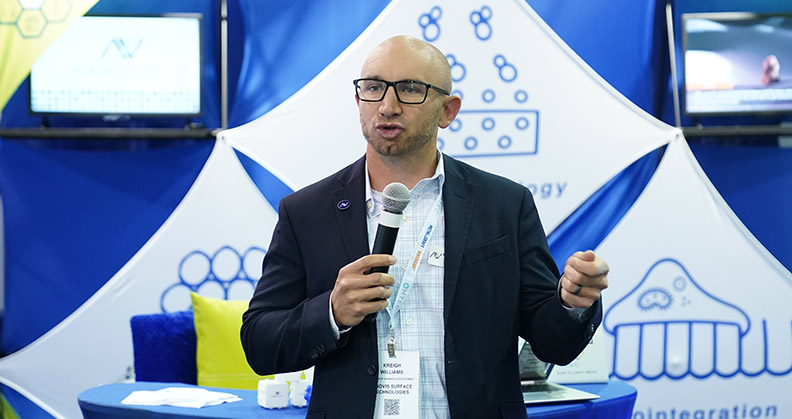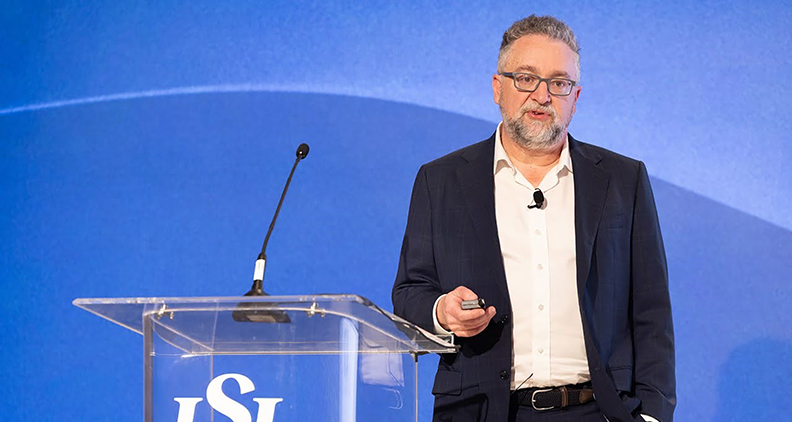
Innovation is a critical business component that must remain at the forefront for orthopaedic device manufacturers to experience long-term success. As the orthopaedic industry has matured and greater external factors have influenced barriers to market, though, the meaning of innovation and emphasis upon its significance has and will continue to evolve.
 A recent PwC Health Research Institute medtech industry survey found that the importance of innovation will grow in coming years. The response from leaders in companies, such as DePuy Synthes, Medtronic and Orthofix, was that 64 percent see innovation as a competitive necessity today and 81 percent believe that innovation will be in five years. In order to truly innovate, manufacturers will need to meet the demands placed on the value of their products. To do so requires a holistic view.
A recent PwC Health Research Institute medtech industry survey found that the importance of innovation will grow in coming years. The response from leaders in companies, such as DePuy Synthes, Medtronic and Orthofix, was that 64 percent see innovation as a competitive necessity today and 81 percent believe that innovation will be in five years. In order to truly innovate, manufacturers will need to meet the demands placed on the value of their products. To do so requires a holistic view.
“As human beings, we want to use the term ‘innovation’ as an absolute definition,” says Jeff Tyber, President and Chief Executive Officer of Tyber Medical. “Innovation happens at so many levels that innovation can be anything.”
Tyber describes technical innovation in three stages: high-level innovation that involves novel devices and procedures; innovation in product functionality; innovation that creates simplicity, ease of use and efficiency.
“In the next five years, the area where we’ll see innovation is the simple efficiencies—simple sells,” he says. “If it’s simple for the doctor to use and the clinical outcome is the same, he’s going to go that route. Also, cost pressures are playing an important role in hospitals purchasing decisions. This cost consciousness will ultimately drive the innovation of implants differently.”
Another certainty is that innovations—big or small—will need to take place throughout the entire process, from research and development through the supply chain.
“We’re thinking about the word innovation in a broad way; sometimes that means adding new products or product features into the market and sometimes innovation may mean adding value to the system at large,” says John Kapitan, Founder of Kapstone Medical. “A lot of people have been saying this for some time, and I would reiterate that device executives need to understand where value is driven in the entire process. By that, I mean the payers, the hospital systems, the surgeons and the patients. Innovation in the future will be a combination of delivery, potentially economic innovation—meaning we can offer more for less—and technical innovation. Those all need to be understood as they relate to each other and to the way that a product is delivered from a company, through the system and finally to a patient. Among the various subsets of orthopaedics, types and levels of innovation can vary greatly. Some markets accept incremental innovation; others demand radical change.”
In order to be effective, device manufacturers must be disciplined in creating formal processes around these models as well as overcome the current barriers to innovation. Those barriers include competition from new companies and markets, demands from regulatory bodies, uncertainty surrounding the Affordable Care Act, intellectual property infringement, emphasis on outcomes and cost effectiveness and limited internal resources.
There are two ways to overcome barriers, Tyber says. The first is to engage in dialogue with the regulatory bodies in order to remove some uncertainty and speed up the process. The second is to build relationships with complementary partners and experts. Kapitan extends that focus on relationships to surgeons, distributors, hospitals and purchasing committees.
“Companies that maintain a laser focus on their customers and their customers’ needs will always have the opportunity to be innovative,” Kapitan says. “When we as companies lose focus on our customers and start diluting our product development, then we can lose innovation opportunities. Our customers are our partners in the innovative process.”
The greater discussion surrounding innovation leads to more questions. How is innovation defined? How does it develop into a meaningful technology or process? How is it measured? To continue the conversation, BONEZONE queried four orthopaedic manufacturers and asked the following:
- Is there more than one definition of innovation?
- Without using the words “napkin sketch,” how does innovation start at your company?
- What have you done to overcome a roadblock to innovation?
- Where do you see the greatest innovation in the industry?
Innovation can mean many different things to different people. I believe that innovation is best defined as a process (from very structured approaches to rather lean or whimsical paths) that brings an idea to bear in solving a problem for a customer. The customer may or may not have been aware that the problem existed, and the idea may be evolutionary in building upon an existing structure or revolutionary in leaping existing solutions. Because innovation can look so different from various perspectives and makeups, there is certainly more than one way to define it.
 There are generally two paths to innovation within our company. One is driven from the bottom-up with direct feedback from, or indirect observation of, customers and their interactions with our products or their world around them. Task-driven innovations that are solving observable problems have the straightest path to market through our development process. The second way innovations start at our company is from the topdown, with thoughtful application of experience and knowledge to what is essentially a blank canvas of opportunity. In this way, our company is able to apply innovative development to non-existent products or future product/solution opportunities.
There are generally two paths to innovation within our company. One is driven from the bottom-up with direct feedback from, or indirect observation of, customers and their interactions with our products or their world around them. Task-driven innovations that are solving observable problems have the straightest path to market through our development process. The second way innovations start at our company is from the topdown, with thoughtful application of experience and knowledge to what is essentially a blank canvas of opportunity. In this way, our company is able to apply innovative development to non-existent products or future product/solution opportunities.
We find testing with our end-users to be an effective approach to pushing innovations that matter to market. By aligning ourselves with varied users representing our varied user base, we can maximize the perspective on our proposed solutions or future ones.
Orthopaedics is a well-defined industry, with very successful products and approaches that enable durable solutions that span decades. Many of the tools, though, reflect this endurance and date the industry as a whole. I believe that the greatest innovations in orthopaedics will lie in the tools and techniques that our end-users apply to existing and expanding opportunities for patients. For example, tools and techniques that enable earlier intervention or outpatient intervention while operating within increasing economic constraints will offer both orthopaedic users and patients to benefit as usage continues to grow.
There are many degrees of innovation in orthopaedics, from instruments that make a procedure a little easier but would likely be difficult to prove a clinical benefit, all the way up to complex (and embattled) drug products like Medtronic’s Infuse, with a great deal of clinical data.
 At Nanovis we’ve identified large orthopaedic and soft tissue implant markets with clinical needs that could be better met by our technology vs. the current option, and where the implants are otherwise relatively undifferentiated. These conditions create attractive commercial opportunities that can support science-driven innovation. We focus on these markets, forming a surgeon and scientific advisory board through which we carefully consider if our nano and material technology platforms can give surgeons a superior choice and patients a supportable clinical benefit. Our surgeon advisors then guide the development of products using our technology platforms and the assessment of the potential for clinically significant benefits through preclinical animal studies, etc. Through this process, we’ve twice found existing technology to be good, but probably not good enough to provide a truly significant clinical benefit. Instead of launching yet another me-too orthopaedic product, we generated or acquired an innovative technology platform that can provide a clinically significant difference.
At Nanovis we’ve identified large orthopaedic and soft tissue implant markets with clinical needs that could be better met by our technology vs. the current option, and where the implants are otherwise relatively undifferentiated. These conditions create attractive commercial opportunities that can support science-driven innovation. We focus on these markets, forming a surgeon and scientific advisory board through which we carefully consider if our nano and material technology platforms can give surgeons a superior choice and patients a supportable clinical benefit. Our surgeon advisors then guide the development of products using our technology platforms and the assessment of the potential for clinically significant benefits through preclinical animal studies, etc. Through this process, we’ve twice found existing technology to be good, but probably not good enough to provide a truly significant clinical benefit. Instead of launching yet another me-too orthopaedic product, we generated or acquired an innovative technology platform that can provide a clinically significant difference.
We run through a process to define the problem, ideate to generate potential solutions, experiment with the ideas to choose the best solution, then defend the solution by definitively testing it to prove the problem is appropriately resolved. The objective throughout the R&D process is to fail as fast as possible, then spend your limited time and strategy with a new strategy that will get you to your objective. We frequently collaborate with people with deep domain expertise to solve a specific problem, and have to form and re-form teams accordingly.
Innovation that is most likely to succeed in the industry are improvements that can be applied across corporate implant portfolios, enabling the implants to address important clinical needs while meeting highly rigorous regulatory standards and still enhance sales despite a rapidly constricting and centralizing pricing, coverage and reimbursement environment. There has been significant innovation for a protracted period in spine with minimally invasive procedures and disk replacements. Innovation with perhaps the greatest clinical potential but that faces great technical, regulatory and coverage/reimbursement challenges are host cellaugmented scaffolds for replacement and repair of tissue defects or even organs. I hope this innovation or a newer variation succeeds one day, and I believe that it will.
I consider innovation to exist at three general levels.
The simplest form of innovation is evolution. This is common and occurs with some frequency. In fact, most product improvements fall into this category. The changes are mostly incremental and don’t change the state of the art.
 The second level of innovation is the revolution. Here a device or technique changes dramatically but is still akin to the parent product. These devices tend to move the bar. This sets up a new platform with new competitive devices and techniques.
The second level of innovation is the revolution. Here a device or technique changes dramatically but is still akin to the parent product. These devices tend to move the bar. This sets up a new platform with new competitive devices and techniques.
The most radical innovations are the paradigm shift. In this scenario, a completely different device or technique is introduced which often obsoletes existing technologies. These are the “game changers,” but they are not common and are hard to predict. It would be hard to sit and inspire oneself to come up with the next blockbuster.
Innovations at our company start by identifying problems for which we think there should be a better or different solution. Part of our DNA is not to accept the status quo. We look at problems with particular challenges or technical difficulties and try to simplify treatments through upgrades in devices and techniques. We also scrutinize known complications and try to create methods that reduce untoward outcomes.
Innovation roadblocks are an interesting phenomenon. Are you out of ideas? Are your ideas lousy? Are they not feasible? The key in my mind is to set up a proper platform for innovation and not take it on single-handedly. Innovation has to start with a discrete problem that you are trying to solve. This may start as an evolution to an existing device. One person’s vision is then put through the creative minds of other doctors and engineers to see what this morphs into. This process of sharing, modifying and development not only enhances the original idea, but also leads to other innovations.
Innovation in orthopaedics to date has been dominated by new procedures and devices. Over the last ten years, biologics have become a significant player in the industry. These products have created a parallel path, and most major companies have their own product line in this realm. The newest wave will certainly be the ability to create cellular regeneration of damaged tissues. It’s hard to tell how close we are to widespread use of this exciting technology, but it seems like a “game changer.”
We see innovation as a continuum of development, and we strive to make small but vital innovations to our technology that ultimately improve the quality of people’s lives. We look upon innovation differently at the multiple stages of development and seek to address serious, clinical problems in each stage.
 Innovation starts in many different places, from identifying an unmet need in a device, to requests we hear from surgeons, patients or sales representatives. Necessity is the mother of invention—we make it our job to find those needs. Our business model is based on solving the problems that may not have had good solutions to date. It is a combination of our team’s persistence in identifying a need and finding a solution.
Innovation starts in many different places, from identifying an unmet need in a device, to requests we hear from surgeons, patients or sales representatives. Necessity is the mother of invention—we make it our job to find those needs. Our business model is based on solving the problems that may not have had good solutions to date. It is a combination of our team’s persistence in identifying a need and finding a solution.
Reduce the roadblock or problem to its simplest components and choose the best pathway to the solution. This kind of problem-solving approach depends on a great deal of creative thinking and hard work. When we began our company, we started out with a medical device that we were unable to gain approval for—that sent us back to the drawing board. However, that setback served as the catalyst that would eventually launch our interbody fusion devices.
We see the greatest innovations coming from the smaller companies in the industry. For example, the smaller companies are able to move an idea from mind to matter in a very short period of time because of the intimate relationships that exist between the engineers and the surgeons, and among all other members of their teams. Larger companies, in general, do this more slowly.




